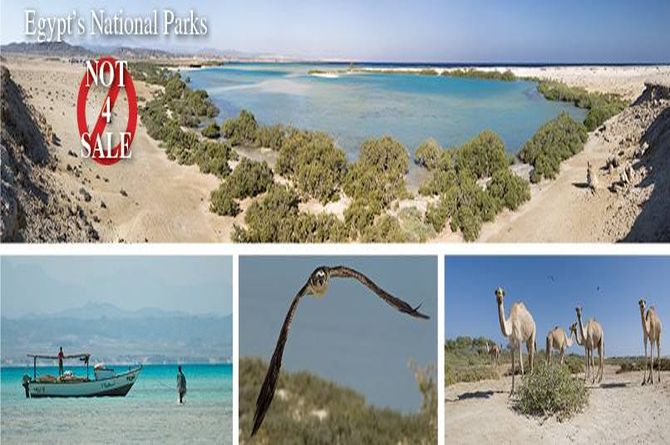Victory for Red Sea Conservation – Ras Hankorab, Abu Ghusun, Sharm el Luli, Marsa Abu Mad not for Sale!
Earlier this month, we received news that land concessions were being offered within the declared National Park areas of Wadi-El Gemal-Hammata. The concessions were to be granted in the areas of Ras Hankorab, Abu Ghusun, Sharm el Luli, as well as Marsa Abu Mad within the Gabel Elba protectorate. These regions have been classified as national parks of Egypt, and therefore illegal to be sold to any person, group or entity under the law. These precious sites have been declared protectorates because of their eco-logical bio-diversity and importance to this region's tourism based economy. These protectorates are part of Egypt's heritage and belong to the Egyptian people.
In the case of Sharm El Luli; this is the only sharm left that is out of investor hands and most of the other sharms along the Egyptian Red Sea coast have been allocated to investors. Ras Hankorab and Sharm el Luli are pristine natural attractions and two of the Red Sea's most beautiful environments.
The TDA has already allocated more than 200 million m2 of land area along the Red Sea shoreline. This is enough land to construct more than 400,000 touristic rooms. This number is way above the carrying capacity of the sensitive coastline habitat and has led to the deterioration and destruction of our countries most important natural resources.
HEPCA would like to make it clear that we aren’t against tourism development. Our struggle in the south is about proper land management and sustainable development; concepts that are integral for the long term sustainability and economic growth of our developing community.
The ministry of tourism is also working with planners that are offering alternative development options for the sites, which will ensure sustainable development planning and a tourism experience we can all benefit from, with no detriment to the environment.
HEPCA was very fortunate to have our managing director Amr Ali host Egyptian Prime Minister Hisham Qandil and the Red Sea Governer Mahamad Kamal on May 20, 2013. It was a unique opportunity for our managing director to discuss important issues in regards to the work HEPCA is doing, as well as our efforts and plans for sustainable tourism development. The minister of environment Dr. Khaled Fahmy is also encouraging more collaborative efforts and the sharing of resources, to ensure the long term preservation of our environment.
These 3 key decision makers have expressed a lot of concern over the challenges we are facing and have shown a strong commitment to conservation efforts. HEPCA is extremely pleased by these important new developments and we are asking our supporters to continue the struggle. If there was ever a chance to bring about the change we've been aiming for; it's now.
The decree against the planned sale of national park land has been translated below as follows:
The ministry of tourism confirms that the National Parks of Egypt are public lands. It's unlawful for any individual or group to own these lands, or use them against the will of the Egyptian people. These parks are our most important tourism attractions because of their unique bio-diversity and eco-logical importance. These national parks have been designated as such because they are home to many endangered species and are unique and sensitive resources. They are an important part of Egypt's heritage and must always be protected.
We are also confirming our full support and appreciation for the collaborative strategy between the environmental protection agencies, civil society, and the Red Sea community in their efforts towards sustainable tourism development.
This is the most forward thinking development strategy for our tourism industry, which is based on scientific study and sustainable use of our resources.
Our master plan should be based around protecting these resources, properly managing them, and magnifying the benefits of this approach on a local and national level. The protection and management of these resources will be the pillars of our national strategy and marketing approach. These protectorates represent our most important tourism attraction and must be re-positioned to exemplify their world-class uniqueness and protected status. This strategy will also ensure that we are generating and allocating resources to supporting the activities of the environmental protection agencies working in these parks. We are committed to investing in infrastructure development that promotes eco-tourism and encourage visitors to these parks, without having any negative impact on the environment and our natural resources.



